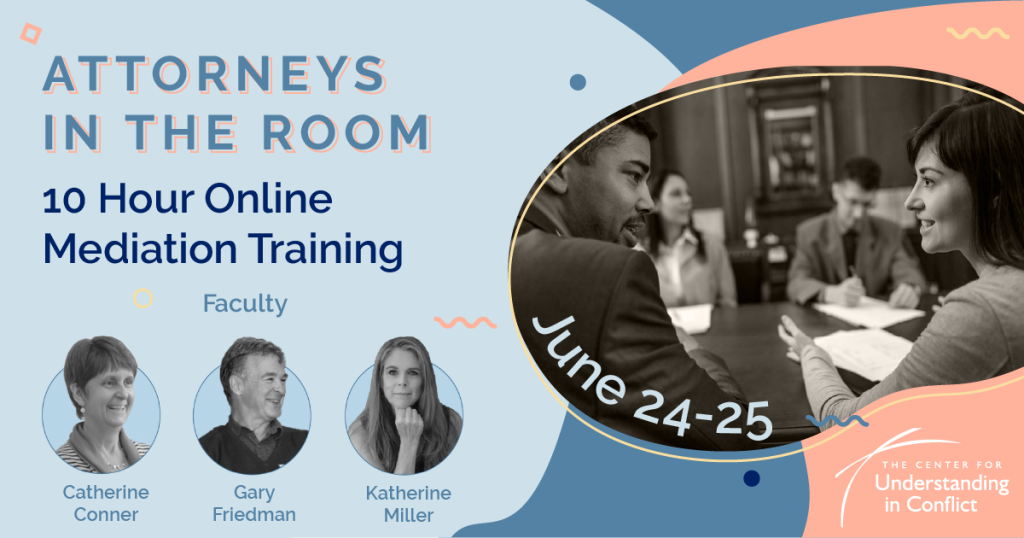
By Catherine Conner, Gary Friedman, and Katherine Miller
Lawyers learn to see conflict as a battle between two sets of adversaries – “opposing clients” and “opposing lawyers.” Often, they are driven, even if subconsciously, to both guard and aggress for clients—like a warrior with a shield and a sword. When we work with lawyers in our model, we strive to create a team of people thinking about and dealing with conflict in a different way.
Contracting with lawyers about their roles is a pivotal step in creating the paradigm shift. We want to preserve the protective function of the lawyers while at the same time highlight the ways they can support the parties to co-create the best solution for themselves. We emphasize the important role of lawyers in gathering and explaining factual information, helping the parties to be clear about what is important to them, and using their past experience in brainstorming creative options and putting together deals. We are changing the process from one based on coercion to one where we all work together to put the parties in a position to make decisions together. And throughout the entire process, the lawyer ensures that their client’s interests are voiced and protected.
We have conversations about the law that will be constructive for the process. Adversarial lawyers often have different views of the law and the likely outcome for their clients, which the parties need to know, but the way they present their views can cause friction. Furthermore, what may be deemed fair by the law may not ultimately be fair for the clients, hindering the development of a resolution that addresses what is important to each party. Our goal in how we present the law is to educate the parties about the possibilities if they do not reach an agreement while not limiting them to just find a result based in law. We also do not want to have the conversation about the law bleed into the conversation about what is important to them.
By participating in deepening their client’s understanding of what is important to the parties underlying the conflict, lawyers can help expand their clients’ perspectives. Since lawyers may know of different pieces of the conflict than the mediator, the other lawyer, and the other party, the lawyers can play a prominent bridging role in developing an understanding what is important to each party. The parties can then decide which principles, values, and things of importance to incorporate into the solution framework.
Through participating in supporting the parties to negotiate, lawyers can help clients better understand their alternatives. Often in mediation, we’re negotiating in the shadow of the law, which pushes for creating a solution purely based on the law of the jurisdiction. However, framing the process as one where the parties are creating something new can help expand negotiations beyond just the law, and incorporate what is really important to the parties. The lawyers’ experience in similar situations is a valuable resource for creative and practical solutions.
Our goal as mediators is to empower parties to know that they can decide the law of their case—they’re bigger together than just the jurisdictional law. Ultimately, we want the lawyers to be on our team so they can help their clients expand their perspective—particularly when things become difficult. On June 25-26, we are hosting an advanced training, Attorneys in the Room, that will provide an in-depth demonstration of how to work with lawyers and clients together in the same room.

